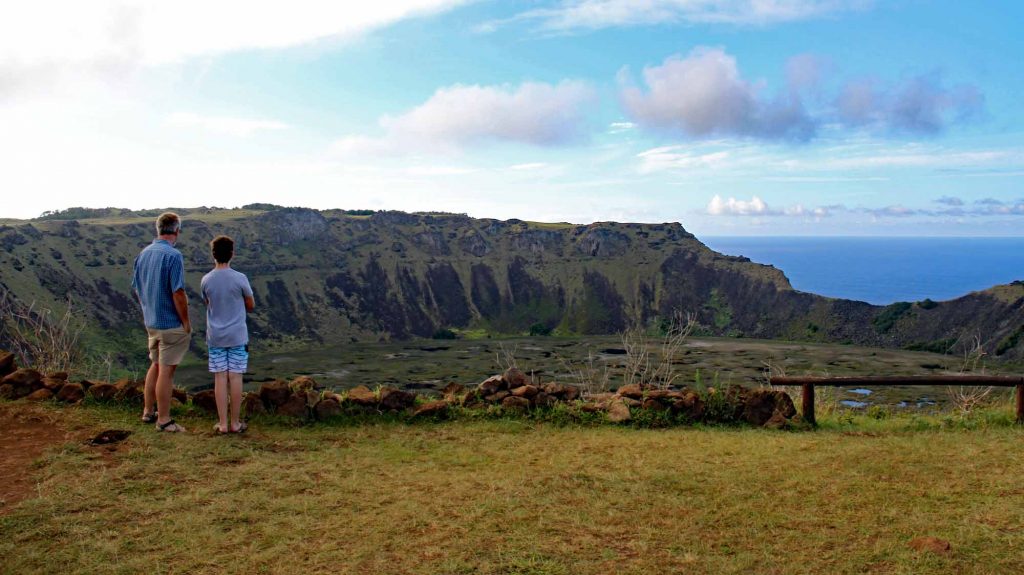
by Jason Bowles | Feb 21, 2018 | Jason, South America
Rapa Nui seemed appropriate for our final destination on this 6-week journey. Southern Patagonia and Antarctica can certainly be described as remote, and Rapa Nui practically defines the word. It was a 5-hour flight from Santiago to reach Rapa Nui (also known as Easter Island); the only other flight arrives once weekly from Tahiti, which is even farther. The nearest populated island, Pitcairn, is almost 2000 kilometers away, and this is an island of only 50 inhabitants.
It is obvious on arrival that Rapa Nui is a Polynesian island: green island, blue ocean, fragrant lei welcome. It is also obvious that this isn’t Hawaii, or even Tahiti. No big hotels, no fancy restaurants, no fancy anything, really. Rapa Nui is small, only 24 kilometers across at its widest. There are as many horses wandering wildly on the streets as there are cars. The harbor contains only a dozen small boats with outboard motors. Air conditioning has yet to reach the island, a luxury that was missed in the heat of their summer. It is not a beach destination, although it does have a nice beach–but only one. Finally, it is quite clear that this isn’t Hawaii when you are greeted by a Polynesian offering you a lei–in Spanish.
Obviously, you don’t travel to Rapa Nui for any of these things. You go for the moai–the iconic heads sculpted from volcanic stone. And they are everywhere! Nearly a thousand of them are scattered around the island. Two stand in the middle of town–Hanga Roa–overlooking the harbor. Several stand before Anakena, the lone beach on the island. There used to be a Moai at the top of the Rano Kau crater, at the ceremonial center of Orongo, but that one now resides in the British Museum.

Rano Kau Crater, near the ceremonial village of Orongo.
We spent days traveling around the island, trying to catch as many of the historic sites as possible. By far the most spectacular, and largest, collection of moai are found at Rano Raraku, the volcanic crater where they all were quarried. This is where moai in all phases of construction and deterioration are strewn across the green slopes of the crater, with unfinished projects still firmly anchored in the open quarry.
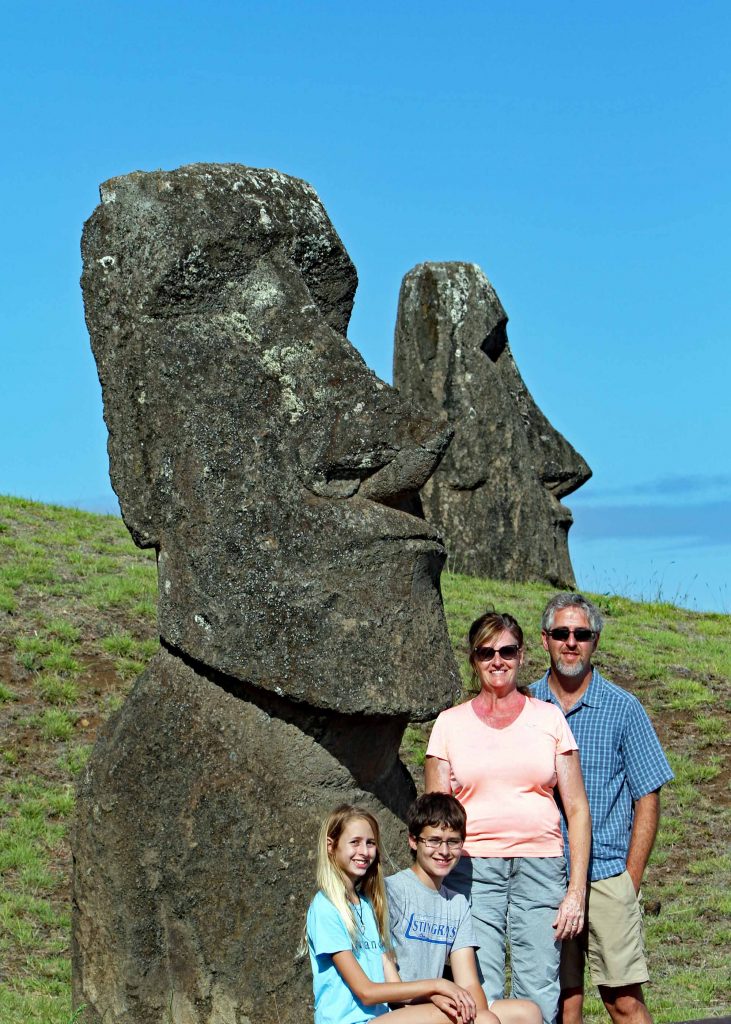
Rano Raraku
After weeks of travel, Rapa Nui was also a place for rest and relaxation. We went diving one day and spent another at Anakena working on our sunburns. Except for the last, a spectacular end to a great journey.
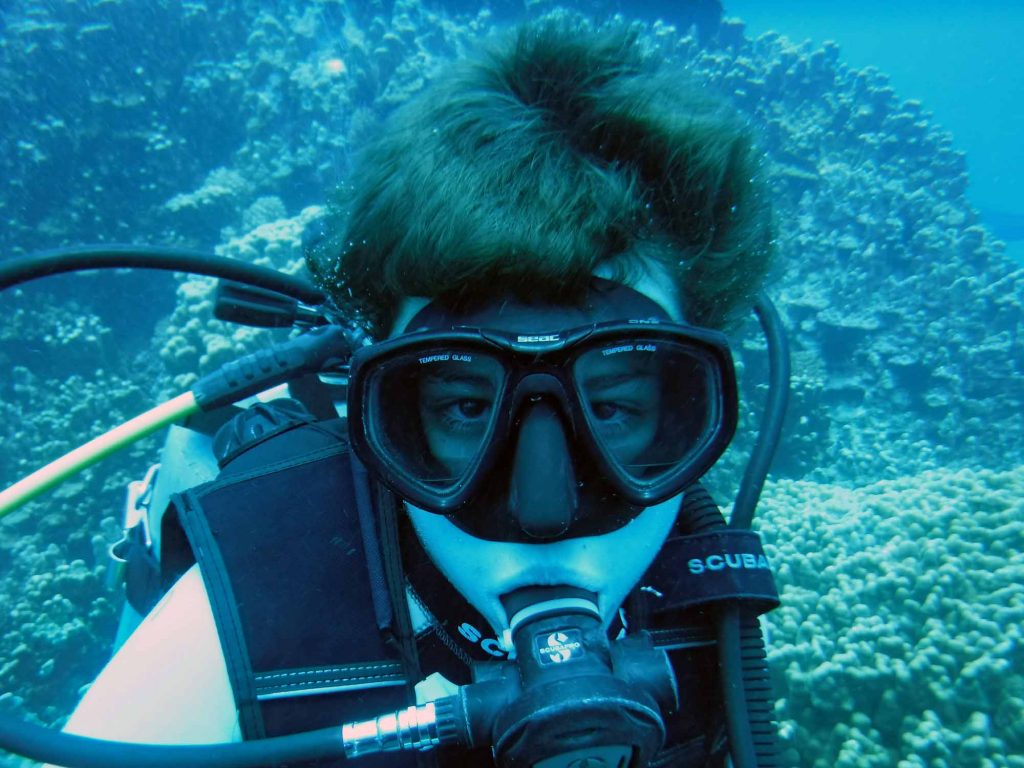
Diving Rapa Nui
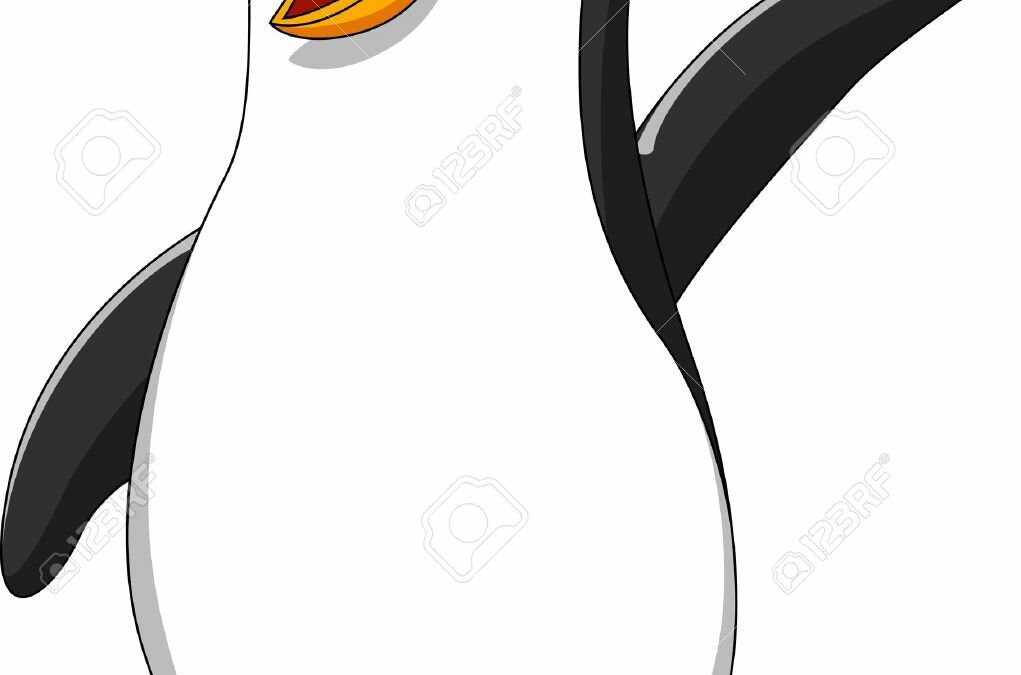
by Jason Bowles | Feb 9, 2018 | Antarctica, Jason
Leaving for Antarctica today!

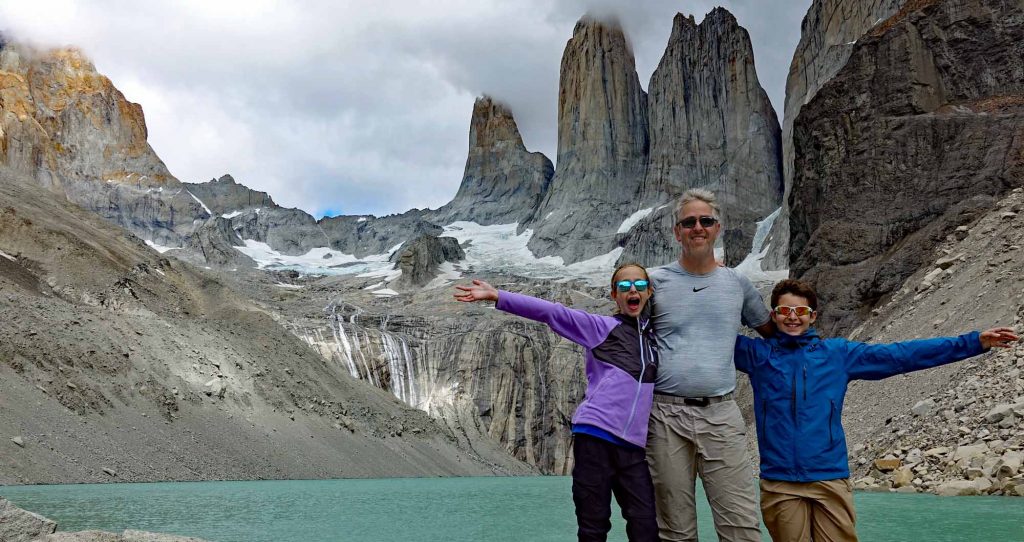
by Jason Bowles | Feb 8, 2018 | Jason, South America
How to describe Patagonia? It’s different. Different than other places, different than I expected. Different, but in a good way. I envisioned Patagonia to be a far-off place with towering mountains and glaciers, a place of exquisite beauty. We certainly found those things in Patagonia, but they are not Patagonia.
In preparation for this journey, I read Bruce Chatwin’s In Patagonia, a travelogue he wrote 40 years ago. I very much enjoyed his book, but it was very different from what I was expecting. Like Patagonia. Instead of cataloguing and describing the immense natural beauty of the place, he focused on the odd collection of people that have been drawn to Patagonia over the years and illustrates this with anecdotes of the odd collection of people he met. Nowhere does he mention Torres Del Paine, but several chapters follow the trail of Butch Cassidy and the Sundance Kid through Patagonia—where they spent some years—before they were forced to flee to Bolivia. Like the place, I found the book different, but in a good way. A few months after reading the book, we were travelling by bus through Patagonia. We left Torres Del Paine early in the morning. Three buses and a border crossing later we were travelling from El Calafate, a small city mentioned in the book, to El Chalten, a smaller place that didn’t exist when Chatwin was travelling. For several hours we passed countless miles of plains with the occasional rolling hill, all covered with yellow grass. If it weren’t for the occasional rhea or guanaco, we could have been travelling across the Great Basin. Nothing at all like the Chilean fjords, with towering mountains, endless ocean passages and ceaseless rain. For most of the last leg of our journey, we were tormented by a loud beeping noise blaring from the cockpit of the bus. We were travelling north on Routa 40—the Argentine equivalent of Route 66—through this desolate grassland, more than a hundred miles from our destination, when we learned that the source of our agony was an alarm indicating engine trouble. Our driver pulled over at a small roadside station to work on the engine. Inside of the station, an entire wall was dedicated to Butch & Sundance, with photographs and newspaper clippings recalling the month that they had to hide out at this very spot after committing one of the crimes that ruined their attempt to become respectable ranchers in Patagonia. It occurred to me then that Chatwin may not have travelled to Patagonia with the intention of writing about Welch villages or American outlaws, but that is what he found there. Patagonia is like that. I decided to reread his book and found that I enjoyed it, even more, the second time.
I think the best description of Patagonia can be found in Chatwin’s book: It’s the farthest place our ancestors’ ancestors could walk to. It’s remote, desolate, with peculiar patches of civilization. It is diverse, with areas of incomparable beauty. Patagonia is unique.

We made it to the Towers!
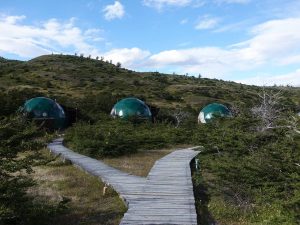
by Jason Bowles | Feb 3, 2018 | Jason, South America
A few photos for now, more to follow from Torres Del Paine.

Ecocamp, Torres Del Paine.
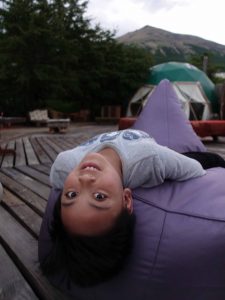
Francis, our new friend from Tuscon.
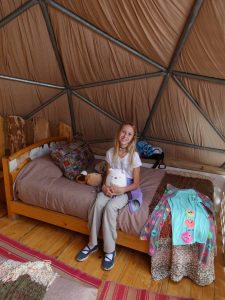
The loft in our dome.
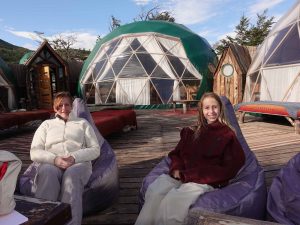
Relaxing by the community domes with a great view of the towers.
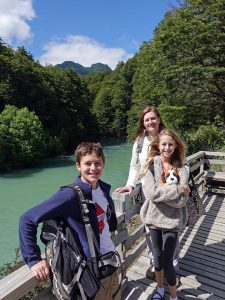
by Jason Bowles | Jan 24, 2018 | Jason, South America
Crossing the Andes from Chile to Argentina was originally a commercial endeavor, bringing Chilean goods closer to international markets. The route we followed has been in use since the late Nineteenth Century but foundered after the opening of the Panama Canal just over a hundred years ago. The route survives though, as an enterprising individual recognized its potential and kept the route alive transporting tourists instead of Chilean goods.
We started our journey in Bariloche, Argentina. It was only a short walk from the apartment we had rented to the Hotel Edelweiss, where we caught our first bus. We stowed our packs in the belly of a Greyhound-like bus and began the first leg of our journey along Lake Nahuel Huapi to Puerto Pañuelo, where we boarded our first ferry. For the next hour, we sailed west through a narrow, glacier-carved arm of the same lake to Puerto Blest. Here we found a newly renovated hotel accessible only by this ferry, one of two possible places to break up what otherwise is a 12-hour journey. The hotel was built on a small peninsula separating the crystal-clear waters of the lake from the colored water of the lower Frias river where it discharges its turquoise sediment into Nahuel Huapi. Here, we boarded smaller buses that transported us along 3 kilometers of dirt road to Frias Lake which was colored just like the river.

Crossing Lago Frias
Frias is a much smaller lake, and the second ferry lasted only 30 minutes, bringing us to the last outpost on the Argentine side. We had to wait for the border police (who arrived on the same boat we did!) to get organized before they could stamp our passports and process us out of their country.
The next leg of the journey was the most interesting. The road leading out of Puerto Frias across the frontier was a steep, single lane that switched back-and-forth up from the lake to cross the border between Argentina and Chile. The border in the southern parts of these countries was created by connecting the highest peaks in the Andes. Where we crossed, this was a volcano nearly 11,000 feet high named Tronador. After we crossed the border—marked with a sign and a simple log portal across the road—we had a spectacular view of the peak and the glaciers advancing down from the summit. At this point in the journey, we were in old 4-wheel-drive buses that occasionally had to be outfitted with chains to make the journey.
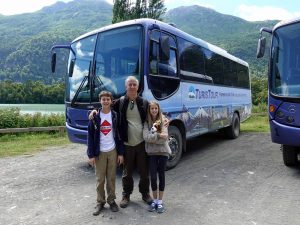
4×4 bus to take us across the border.
We bumped along this road, descending from the border down into Chile. The road transitioned from the steep mountain road to a pastoral river valley with a few ranches before we arrived at a small “town” called Peulla. A large hotel—Natura—was where we would spend the night, but only after clearing Chilean immigration and customs, not a very efficient process as the 50 of us making the crossing tried to locate our luggage and open every one of our bags for the few customs agents assembled in what amounted to a small plywood shed. After clearing this hurdle, it took some time to sort out the next bit of confusion as company organizing the crossing had only booked one room with three single beds for our family of four.
While we settled in for the evening, the majority of those who started with us boarded the final ferry to cross Lake Todos Los Santos. Peulla is located at the eastern end of the lake where the glacial Peulla river and the volcanic Black river join the lake. In addition, a smaller stream plunged into the lake from the cliffs near the dock on the lake. This stop afforded us a leisure morning and a midday 4×4 tour of the valley, crossing through the Peulla river and boating along the Black River. The highlight for the kids was visiting a nearby ranch that had pigs, goats, llamas, and alpacas.
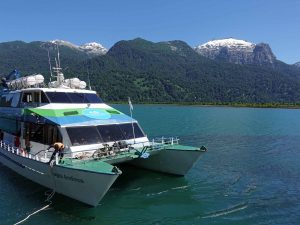
Ferry on Lago Todos Los Santos.
Later that afternoon, we joined the group making the crossing from Argentina that morning, boarded the final ferry and motored for two hours the length of Todos Los Santos. Midway through the journey we rounded a bend and saw our destination, although we did not yet know it. What we saw was the perfect snow-capped cone of the volcano, Orsorno. For the next hour, we watched it grow larger until we finally reached Petrohué on the eastern base of the volcano. Here a bus took us the last hour to Puerto Varas, driving between Osorno to the north and another volcano, Calbuco, to the south, along the shore of Lake Llanquihue. Calbuco last erupted in 2015. The mushroom cloud of the initial explosion was visible over 100 miles away, and for over a month ash from the eruption covered the surrounding towns. All told, over 4 meters of ash had to be cleared to reopen the road.
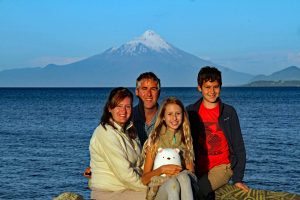
Volcan Orsono
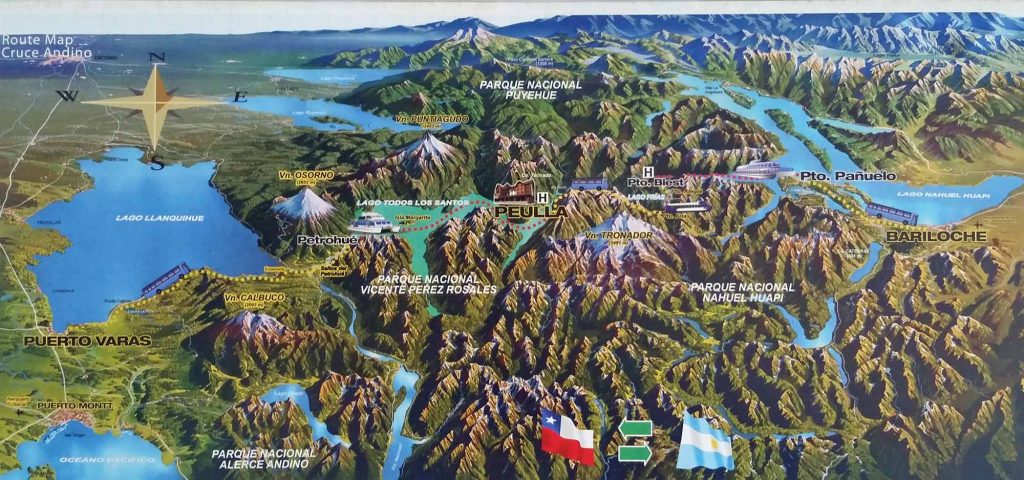
Our route from Bariloche, Argentina, to Puerto Varas, Chile.
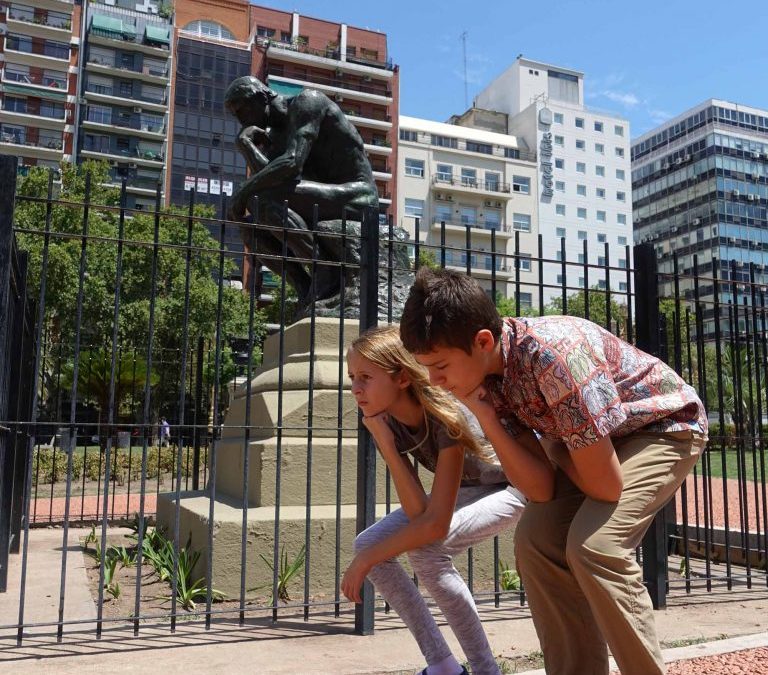
by Jason Bowles | Jan 17, 2018 | Jason, South America
It took some explaining to appreciate the moniker “Paris of the south.” In general, big cities can be rather generic. Paris makes my short list of exceptions, though. I was excited to visit, and hoping that BA would join Paris, Istanbul, Bangkok, New York, and the few other big cities that have enough unique character to make them stand out.
At first, it seemed a very poor comparison. Leaving the Aeroparque Jorge Newbery, we took a taxi into town. The domestic airport sits on the bank of Buenos Aires’ “river”, the Rio de la Plata, which isn’t really a river. Over 200 kilometers wide, the Rio de la Plata might be better categorized as an estuary (or possibly a gulf) that happens to meet the confluence of the Parana and Uruguay rivers. There is a fair amount of commercial activity along the Rio, and looking north all you see is the horizon; Uruguay is lost in the distance. Not nearly as charming as the banks of the Seine.
When we reached our apartment building in Recoleta, the streets started to look a bit more continental. Closer to the city center, wide avenues and European architecture were even more common. We also visited a city park with a large Rose Garden designed by a French landscape architect that did have a Parisienne feel. When pointed out, the similarities are there—certainly more so than any of the other Latin American capitals I have visited—but I certainly would not have made the comparison myself.
OK, so it’s not Paris. What is there to see and do in Buenos Aires? The most popular tourist attraction is the Recoleta Cemetery, the highest rent district in the city. In a relatively small space (about a city block), the city’s elite have been building monuments to themselves for centuries. Within and under these monuments are the crypts containing generations of their progeny, as many as six levels down. Most of the names were lost on us, but we did visit the tombs of Domingo Sarmiento and Eva Peron. The kids were not impressed.
The Rose Garden was interesting as it contained monuments to the revolutionary leaders that helped liberate the Americas from their European masters: Jose de San Martin (the liberator of Argentina), Simon Bolivar (who liberated the northern half of the continent), Jose Marti (who we learned about when visiting Cuba not long ago), and even George Washington. No monument to Che Guevara, but we did visit the University where he studied medicine.
Two highlights from BA: a Tango show, and discovering closed-door dining. Certainly, one of the Tango-capitals of the world, we had to go to a Tango show while in Buenos Aires. We were a little apprehensive as the show was not well attended (there were more people on stage than in the audience), but the show was fantastic! The dancing and live music were outstanding and included dances with drums, whips, and the Argentine equivalent of Hawaiian poi balls. After the show, we learned that the accordion player, Carlos Buono, was a virtuoso and was well-known around the world.
Closed-door dining was another highlight. Apparently, this exists around the world, but we had never heard of it before. We read about Casa Saltshaker in Lonely Planet and it came highly recommended. The restaurant is in the home of the proprietors, and only after you secure a reservation do you learn where that is. We arrived at 9 pm and had drinks with 8 others before joining them around the dining table in the chef’s home. We enjoyed great food throughout our stay in BA, but this 5-course meal was, without question, the best. The experience, also, was quite unique, and one that we look forward to repeating.
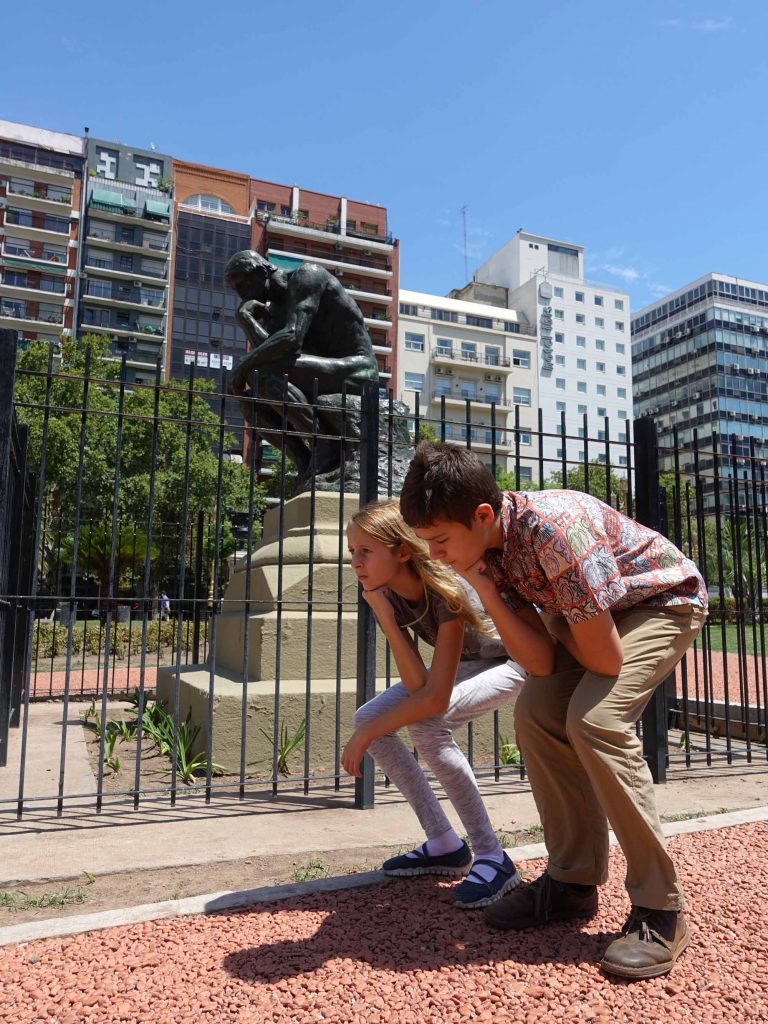
One of only 3 copies of Rodin’s The Thinker cast from the original mold.
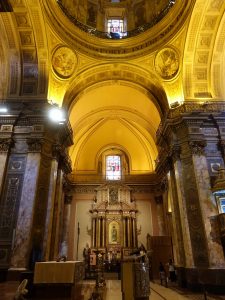
Pope Francis used to give mass here before he was elevated.
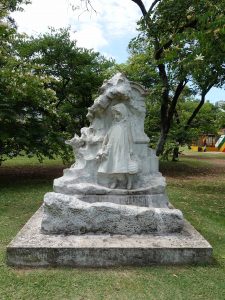
The only statue of Little Red Riding Hood.























